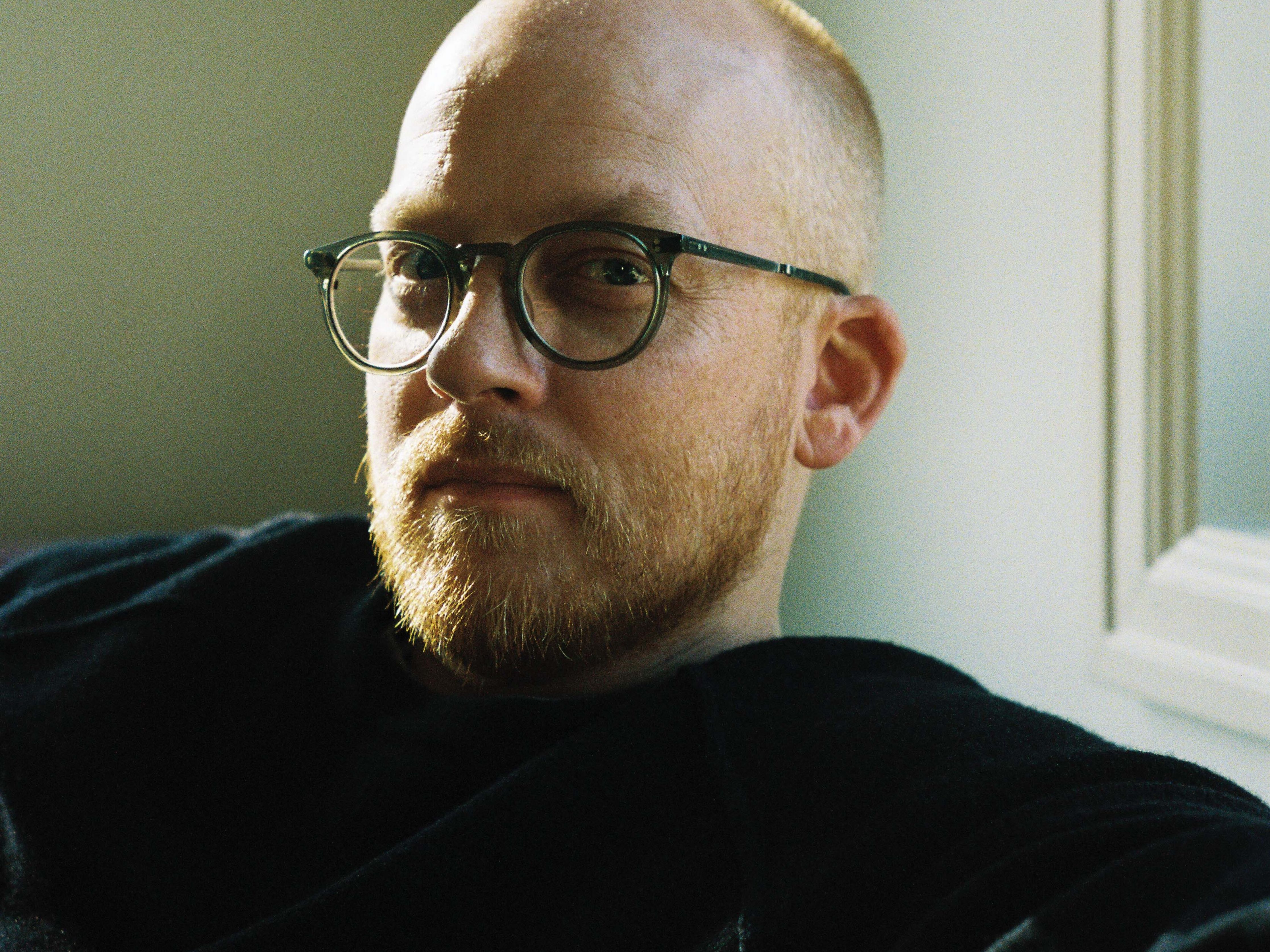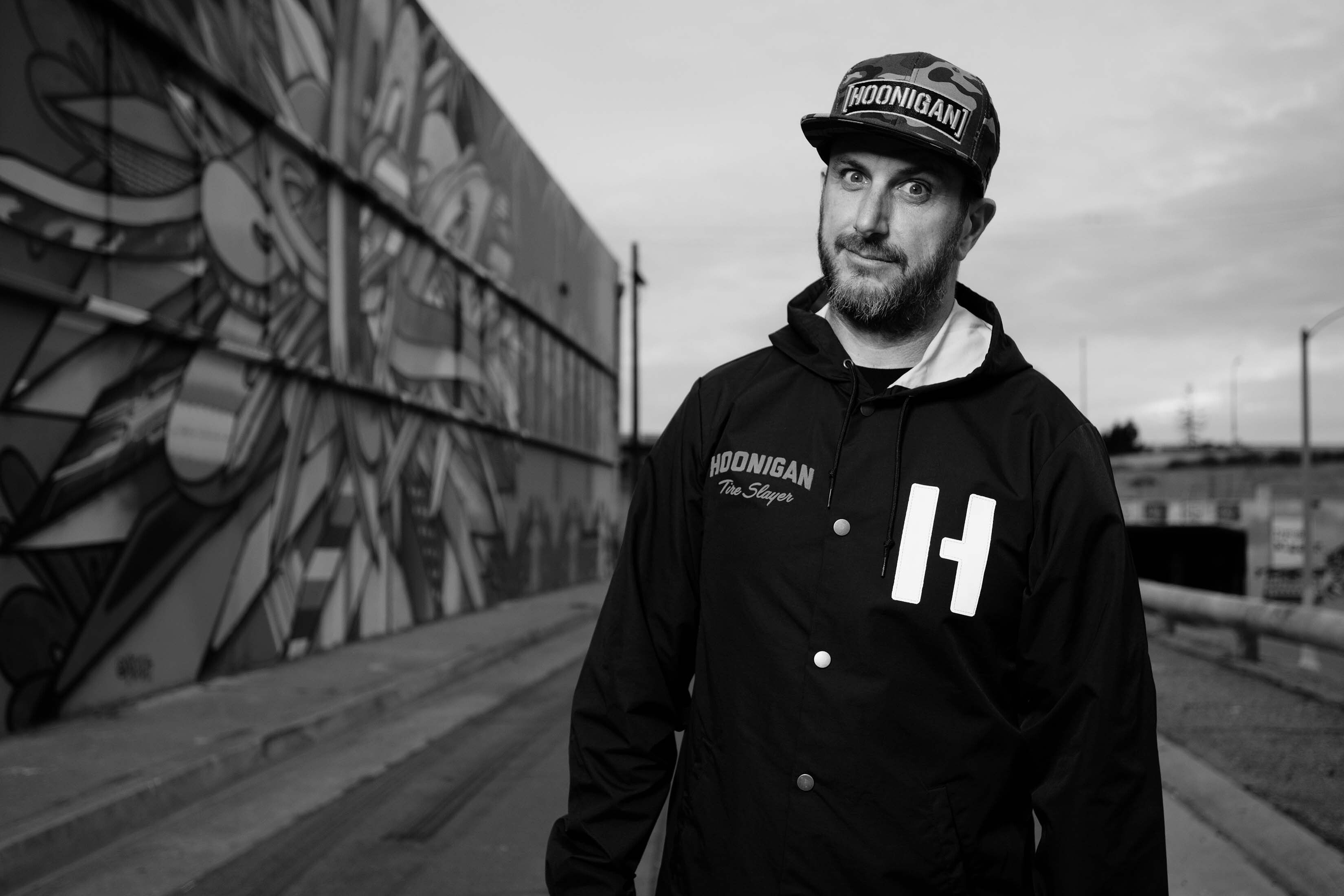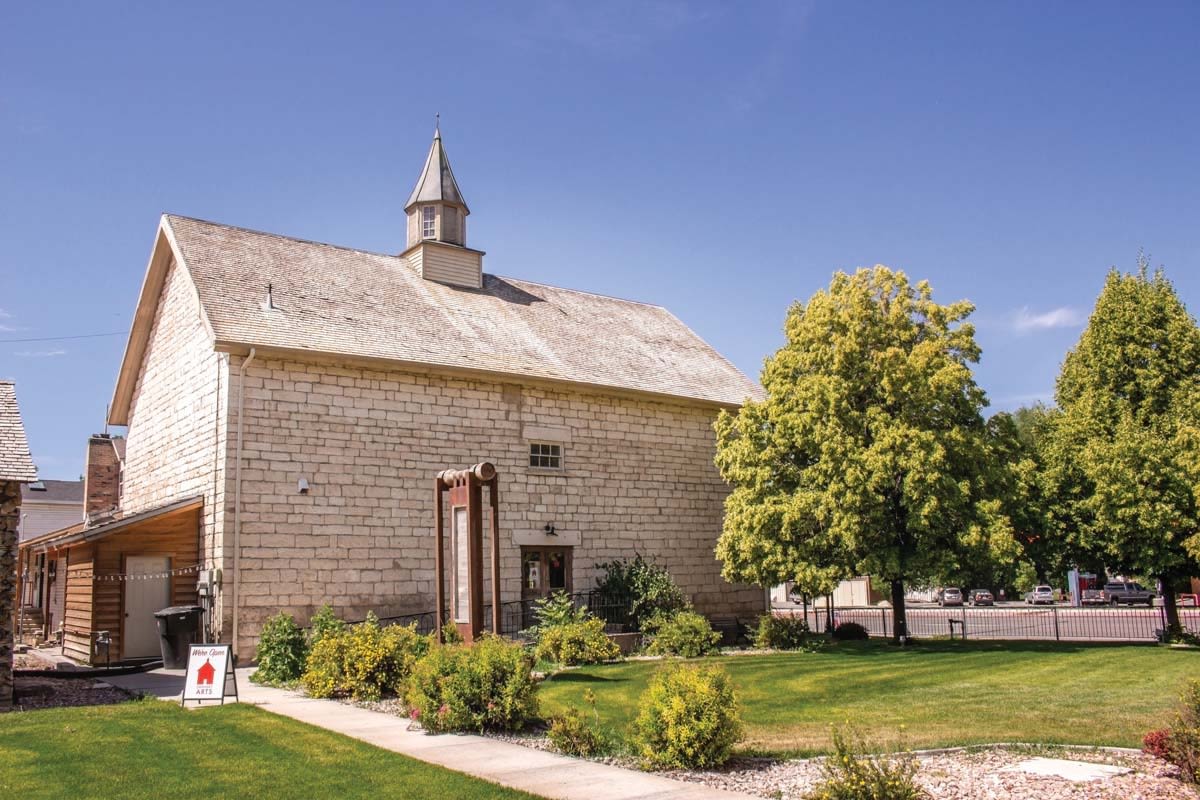Blown Away
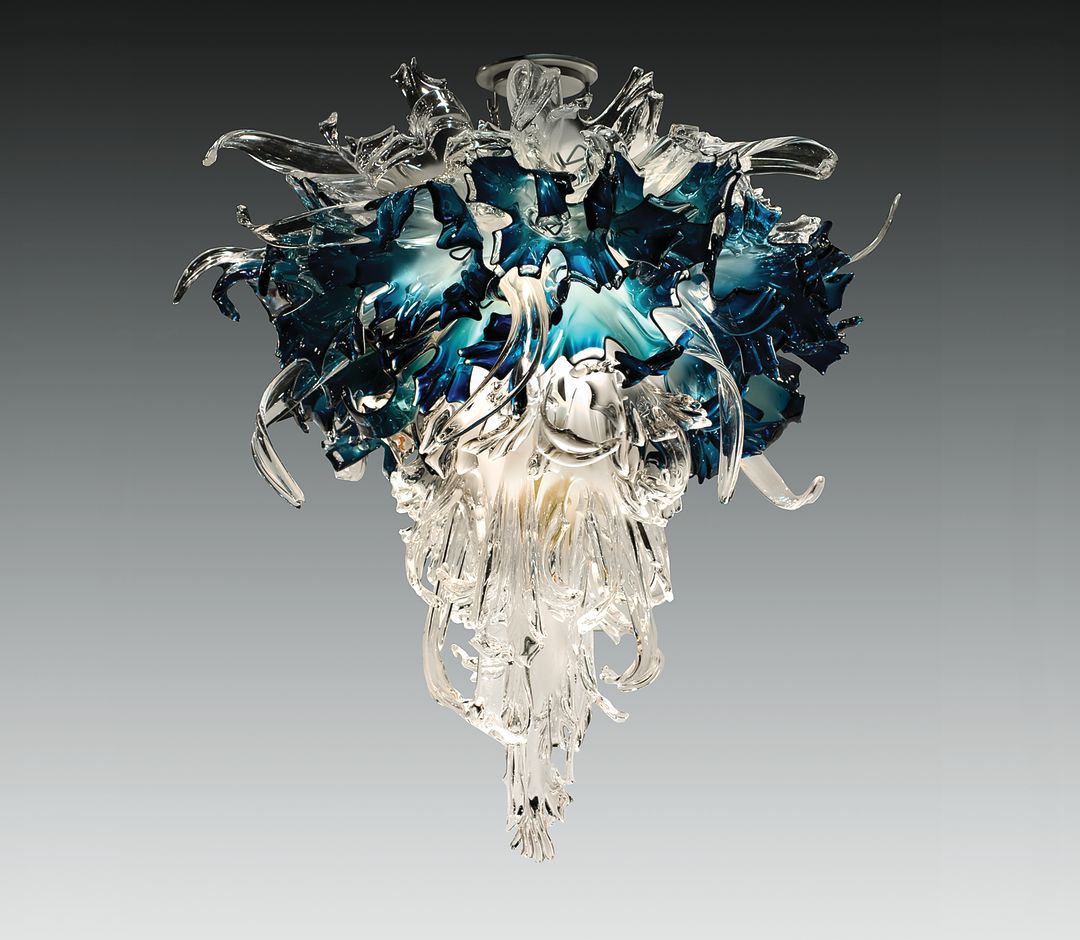
Barry Entner's Corona Chandelier at The Dancing Hands Gallery
Image: The Dancing Hands Gallery
Blow it. Lampwork it. Fuse it. Cut it. Assemble it. Glass artists tinker with their hands, tools, and luck for hours or days to create the pieces that are sold in Park City’s galleries and shops. “Have you watched glass artists work? Their hands dance,” says Chris Meyer, owner of The Dancing Hands Gallery (591 Main St). “Each finished product tells a story. That is the joy of glass art.”
Take one look around Meyer’s gallery, and you’ll agree. Sweeping glass sculptures twist toward the ceiling the way flames lap into air. Precisely cut edges distinguish squared-off jars and vases. While some pieces consist of a single color, magnificently divergent palettes characterize others.
In her six years as a gallery owner, Meyer says she’s learned it’s impossible to predict which pieces visitors will love. “I’ve stopped trying to guess,” she says. “It’s always a mystery. Certain colors in glass art seem to attract or repel collectors, though.” (Meyer says that rusty orange and faded teal are among the colors buyers prefer.) “When someone walks into the gallery, I love to watch what happens. Certain pieces speak to certain people. They’ll stop and look at something closely, move on, then return to that piece to look some more. People fall for the story they see in the glass.”

Summer Sarinova with her mosaic mural at a firefighters' monument
Image: Summer Sarinova
Summer Sarinova is a New Mexico–born glass and mosaics artist who now lives in Park City. Her glass art is mostly wearable, and she’s best known for her ornate feather pendants. This year, Sarinova’s pendants were spotted on actress Izabella Miko and other celebrities at the Sundance Film Festival. Sarinova is a self-taught glass artist. “A mosaics client unexpectedly gifted me with all the equipment and supplies I needed to make glass art,” she explains. But she still faced a steep learning curve. “It took me about six months of practice to create something that clients loved,” she says. “I learned so much during that time.”
Because she never went to school for glass art, Sarinova says, “My work looks and feels organic. What art schools might have called flaws are features that people love in my work.” Her glass art can be found at Atticus Coffee, Books, and Teahouse (738 Main St, atticustea.com) and Flight Boutique (562 Main St, flightclothing.blogspot.com) or purchased from her directly (sarinova.tumblr.com).
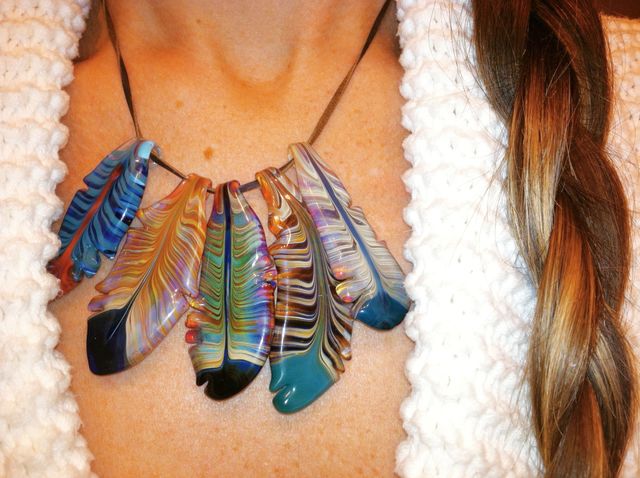
Summer Sarinova's feather pendants.
Image: Summer Sarinova
The glass art story is in the details at Thomas Anthony Gallery (340 Main St, thomasanthonygallery.com). There, you’ll find glass art created by Jacarte, a collective of American and Chinese artists. “We feature Jacarte products because of their intricate inside painting, which is of exquisite quality,” says Tom Bruski, who owns the gallery with his wife, Carolyn. The elegant paintings—of orchids, dragonflies, roses, and more—are crafted with a small, hooked brush inside hand-sculpted glass vessels. “Our clients love both the idea and the price point,” Bruski says.
While Sarinova is Park City’s only resident glass artist, the work of other American and international glass artists (including a few from elsewhere in Utah) can be found in various Park City galleries and boutiques, including Terzian Galleries (309 Main St, terziangalleries.com), Coda Gallery (804 Main St, codagallery.com), and Silver Queen Fine Art (577 Main St, silverqueengallery.com).
With stories that reveal glass art’s aesthetic, history, and makers, the compelling question is: which story will speak to you?
Glass Class
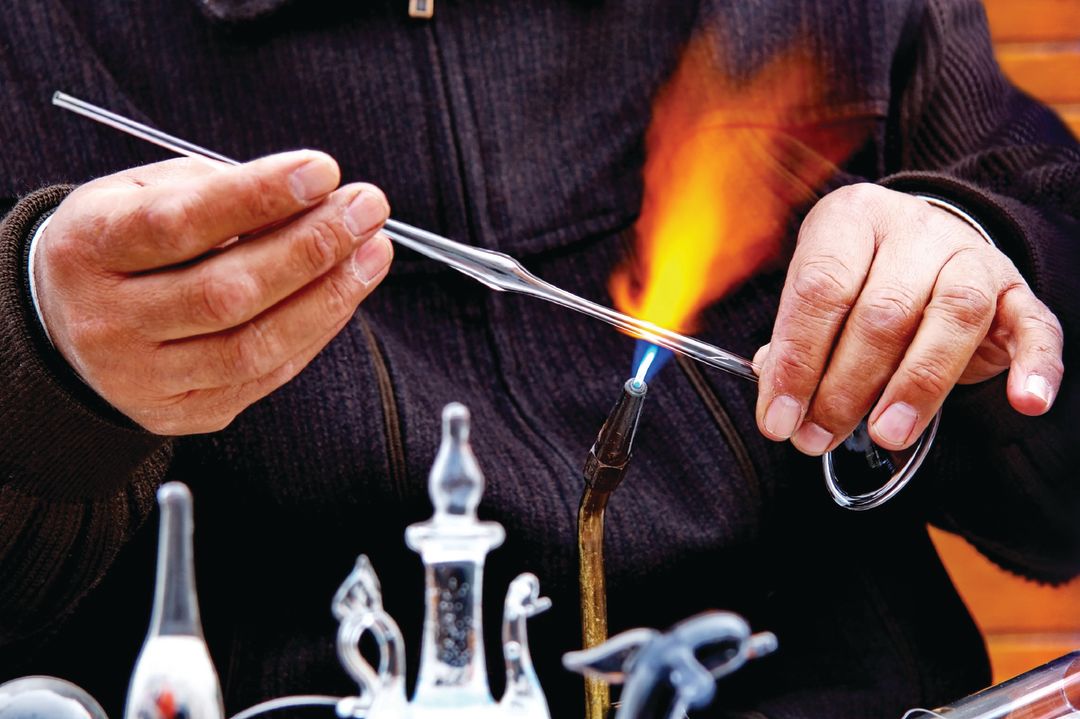
Image: Xyno
Materials Most glass art is composed of either “soft glass,” soda-lime glass, or “hard glass,” also called borosilicate glass. In general, hard glass remains stable under a wider variety of temperatures and use conditions.
Creation Most glass art is birthed through blowing or lampwork. In glassblowing, a glass tube is heated to its melting point and then expanded with the artist’s breath. In lampworking, a glass rod is held over a propane torch until it reaches its melting point. The artist then spins, shapes with tools, or simply lets gravity shift the molten glass. Sometimes artists employ kilns to fuse together separate pieces of glass. Many glass art pieces are made through a combination of blowing, lampworking, and fusing.
Stabilization Annealing, which occurs in a kiln, is the process of stabilizing a piece of glass art. After a piece of art is created, it’s inserted into a kiln heated to around 1,500 degrees Fahrenheit. Over the course of 12 to 15 hours, the kiln’s temperature decreases to room temperature. This allows the glass to cool slowly and uniformly, which repairs weak points that form during the creation process and prevents others from emerging during cooling.

